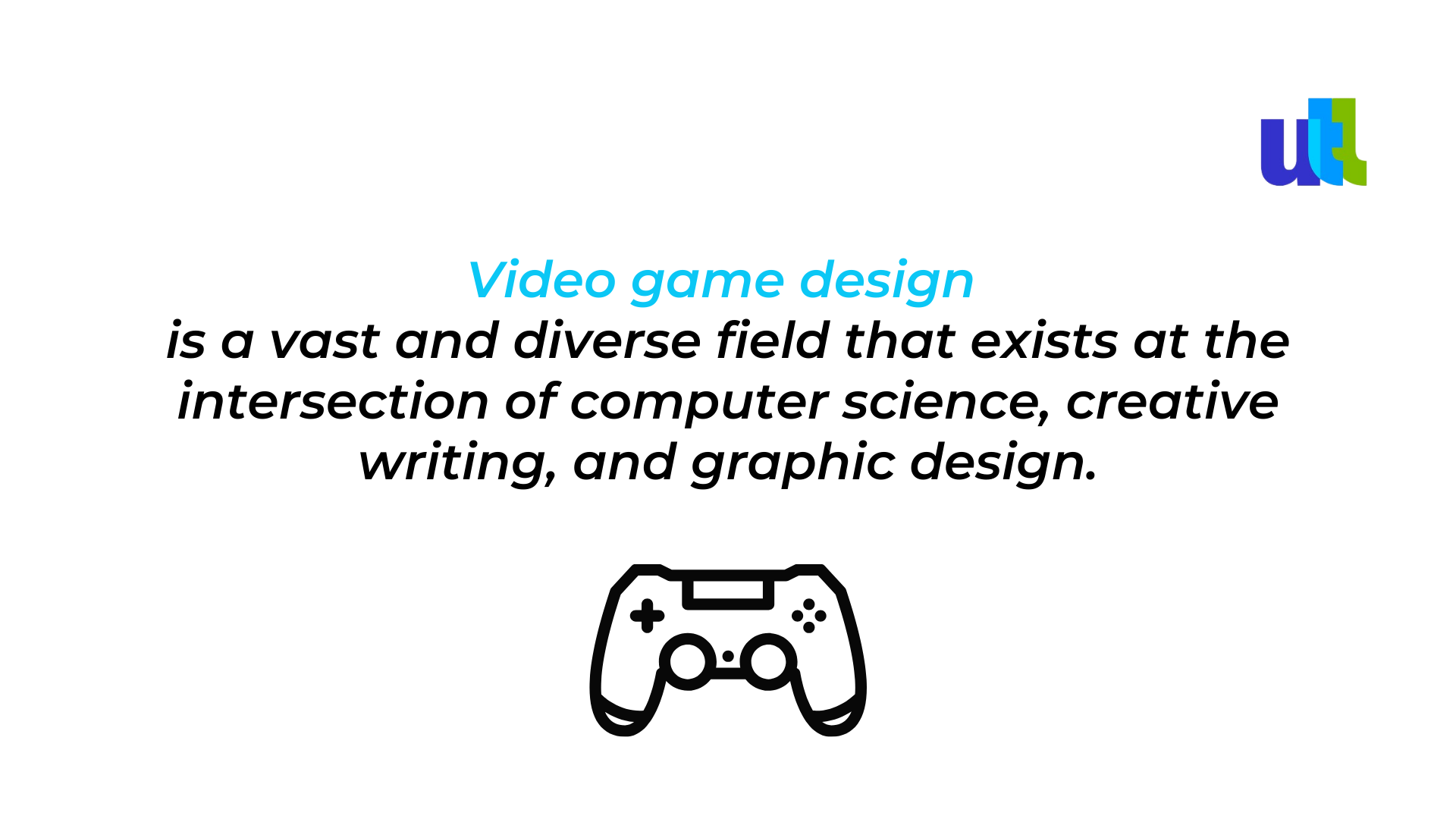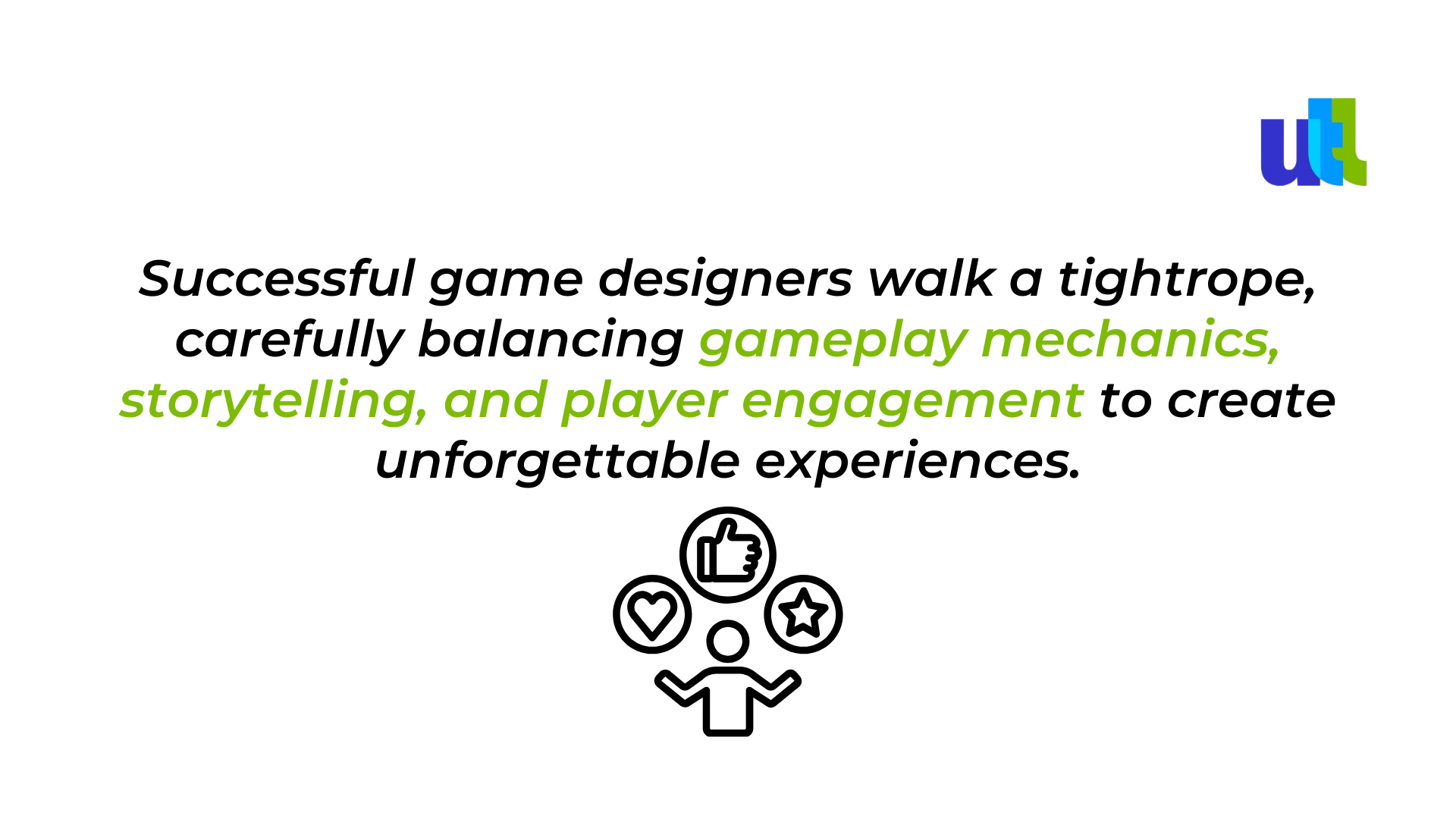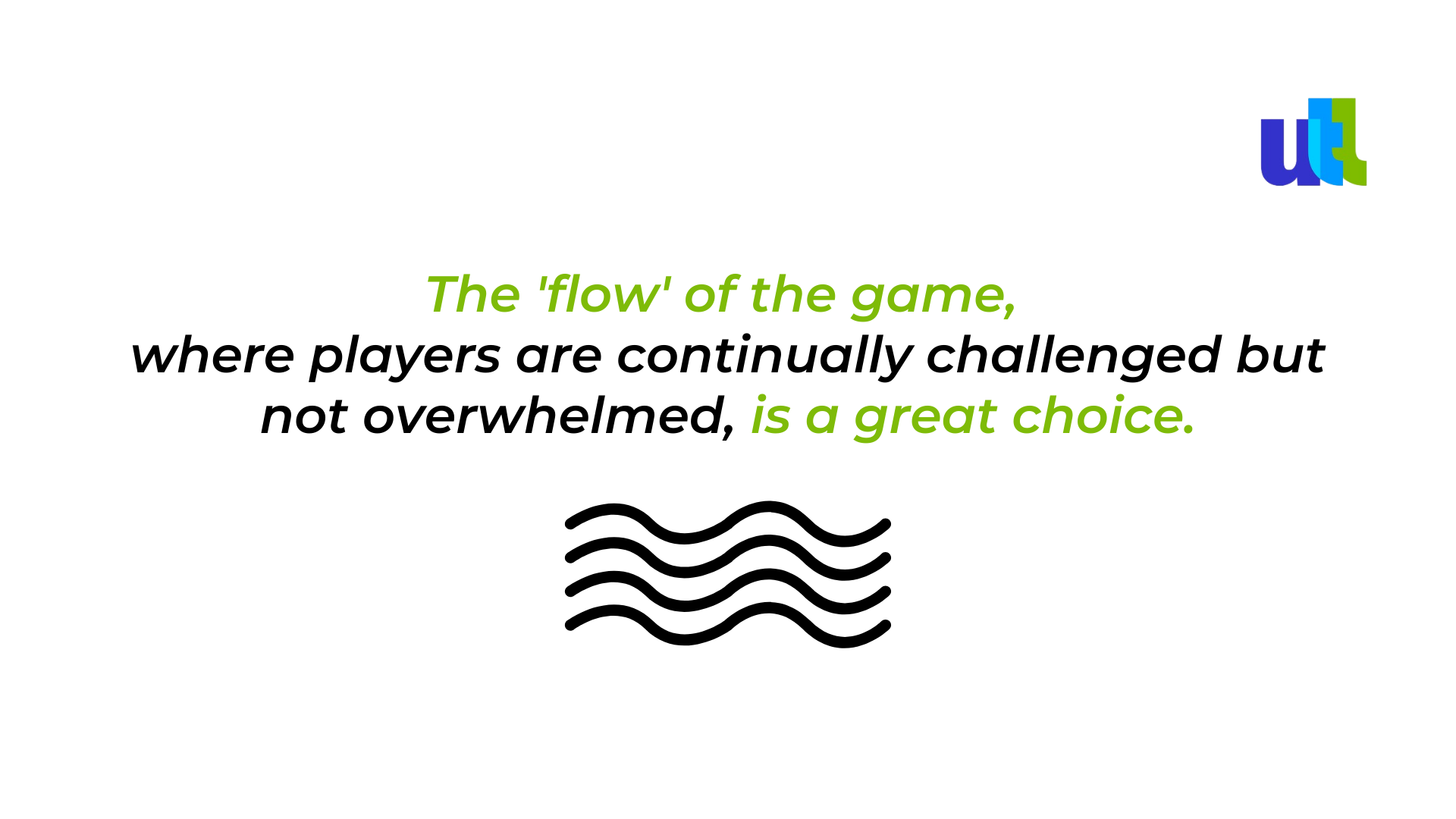Video games have evolved from simple 8-bit pixelated adventures to immersive, lifelike experiences transporting players to new worlds. Behind every successful video game lies a team of dedicated game designers who blend creativity, technology, and psychology to create captivating experiences that resonate with players. In this article, we'll explore the difference between the most popular terms related to game production process, discover main aspects of successful video game design and the key elements that drive it.
Game design vs. game development
Game design and game development are two different terms, though they are often used interchangeably. However, they do mean different things:
Game design is a subset of game development. It refers to the conceptual and creative side of things: the initial vision, the mechanics, the story, the characters, the locations, etc.
Game development is a broader term that covers game design while also includes the technical implementation of the game concepts using game development software. It is the entire game production process.
At some smaller game development studios, the same team members wear many hats and might be responsible for both fields. At larger companies, however, game design is handled by a separate expert team of level designers, writers, artists, and interface designers.
Video game design is a delicate and intricate craft that demands a unique blend of creativity, technology, and psychology. It involves making hundreds, and usually thousands of decisions that cover a variety of aspects, including:
- Gameplay
- Worldbuilding
- Level design
- Characters and dialogues
- Storylines
- Music and sound effects
- User interface
- And more

Any work related to the creative vision of a new video game will come from a game designer. Typically, they present their ideas in the form of sketches, mockups, concept art, character models, or storyboards. Such assets are usually created using a variety of specialized game design tools.
A game designer takes the creative lead and comes up with a comprehensive concept for the game that is going to be built. And that is often what separates successful game projects from failures.

Before writing a single line of code, an experienced game designer creates a map for what he is going to build. So…let’s go deeper into the main aspects of successful game design.
1 - Player-Centric Design
The foundation of a successful video game begins with a player-centric approach. Game designers immerse themselves in the mindset of the target audience, studying their preferences, expectations, and skill levels. By understanding the players, designers can tailor the game's mechanics, aesthetics, and narrative to resonate with their target audience.
This approach recognizes that the ultimate goal of game design is to create an enjoyable and engaging experience for players. For example, incorporating feedback mechanisms, such as in-game tutorials, hints, or achievement systems, helps guide and motivate players. Such mechanisms provide players with a sense of progress and accomplishment.
2 - Gameplay Mechanics
A game's mechanics are the core of the player's interactive experience. Successful games offer a balance of challenging and rewarding gameplay. Mechanics should be intuitive, allowing players to pick up the controls and understand the rules quickly.
Later, depth and complexity can be added over time to maintain interest and provide room for skill development. The blend of skill-based and luck-based mechanics often adds depth and keeps players passionate about the game.
3 - Storytelling
Not all game developers give particular importance to storytelling, but games based on a good story quickly occupy a place in the hearts of players.
It starts with high-level worldbuilding, usually done by the lead game designer. Lower-level details, such as the creation of locations, events, quests, characters, and dialogues, are later worked on by a team of level designers.
Successful game designers recognize the importance of storytelling, creating rich and immersive worlds with well-developed characters and intriguing plotlines. The game's story should complement the gameplay and not overshadow it, engage players emotionally and intellectually, motivating them to progress through the game.
4 - Aesthetics and Art Direction
The visual and auditory elements of a game can significantly influence its success. The art direction, including character design, environmental detail, and overall aesthetic, should align with the game's theme and story.
Artistic consistency is key, ensuring that the game's visuals create a coherent and immersive world, while sound design, music, and audio effects complement the visuals and enhance the player's sensory experience. Players may develop attachments to the game's characters or feel nostalgia for the art style long after playing the game.
5 - Player Progression and Personalization
Players need to feel a sense of accomplishment, whether it's through leveling up, acquiring new abilities, or uncovering secrets. Effective progression systems provide both short-term rewards and long-term goals, motivating players to keep playing. Personalization features include character customization, difficulty settings, and choices that impact the game's narrative.

6 - Replayability
Successful games are designed to keep players engaged over time. Therefore, replayability and endgame content are vital. This can include regularly updated content, competitive multiplayer modes, or extensive post-game challenges.
Such features encourage players to return to the game and continue their journey long after the initial release.
7 - Innovation and Iteration
Innovation is the lifeblood of the video game industry. Successful game designers are not afraid to experiment and introduce fresh ideas, even if they don't always work out. At the same time, iteration allows designers to refine and build upon previous successes and failures, continually improving the game's overall experience.
Wrapping Up
Successful video game design is a multifaceted craft that combines creativity, technology, psychology, and a deep understanding of player preferences.
The game design process varies from studio to studio. Game design is a complex and interdisciplinary field, and game designers at smaller studios have to wear many hats. The core elements of game design can be roughly broken down into 7 main categories mentioned above.
Furthermore, by focusing on accessibility, replayability, and continuous innovation, game developers can craft games that not only capture the hearts of players but will also survive over time. In the end, the magic of video game design lies in the ability to transport players to new worlds, evoke their emotions, and leave a lasting positive mark on their gaming journey.
For free consultation on video game design, click here.
----------------------------------------------------------------------------------------------
View the full presentation:
WRITTEN BY
Sofia Kutko
2023-10-16














































































































































































